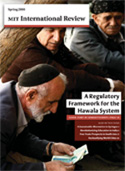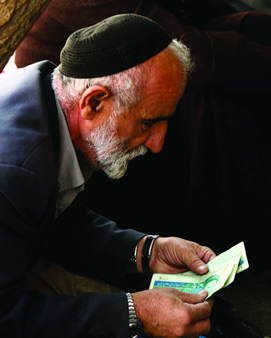Welcome to the MIT International Review
The MIT International Review is MIT’s first interdisciplinary journal of international affairs. MITIR aspires to support solution-oriented discourse on challenges facing our global community.
The editorial review board will update this space frequently with new content and features, so we encourage you to visit often. Prospective authors should consider MITIR’s approach and review MITIR’s submissions guidelines.
Taking MITIR to the next level
Two years ago we envisioned a journal that would mobilize the world’s best ideas in the debate on global challenges and their solutions. Since then we have received tremendous support for this cause, validating our belief that we can make headway in addressing those challenges by providing a platform for fresh and thoughtful problem-solving efforts.
With this vote of confidence, we are excited to take MITIR to the next level. To that end, we are:
Read more >>
Read more >>
Read more >>
August 2009 Online Exclusive
Iran's George Washington: Remembering and Preserving the Legacy of 1953
By Sam Sasan Shoamanesh
Seldom seen primary evidence, archived photos and historical correspondence, shed light on what 1953 has meant to the Iranian people.
July 2009 Online Exclusive
Iran in Turmoil: Understanding Political Divisions & Advocating Human Rights
By Sam Sasan Shoamanesh
The international community should project its unified support for human rights in Iran.
May 2009 Online Exclusive
How and Why to Promote US-Iran Rapprochement
By Sam Sasan Shoamanesh
The Obama administration should exercise practical diplomacy in securing Iranian cooperation in the Middle East.
View Article View PDF (575 KB)
February 2009 Online Exclusives
Finding Osama bin Laden: An Application of Biogeographic Theories and Satellite Imagery
By Thomas W. Gillespie et al.
Biographic theories can be put to use to find al-Qaeda's founder.
View PDF (2.2 MB)
A Response to Professors Gillespie and Agnew on "Finding Osama bin Laden" by Murtaza Haider
Butter, Guns and Ice-Cream: Policy Implications of Economic Theories of Conflict
By Raul Caruso
Economic investment in the "uncontested sector" can reduce the propensity for civil war and increase a nation's welfare.
View PDF (416 KB)
Violent Conflict in Town and Country
Photos by Nicholai Lidow, Text by Topher L. McDougal
As the number of violent conflicts increases worldwide, people adapt to a status quo of crisis.
View PDF (1.9 MB)
2008 Online Exclusives
Using Satellite Imagery to Evaluate the Surge
By John A. Agnew
This article draws on a paper that has received tremendous media coverage, “Baghdad Nights: Evaluating the US Military ‘Surge’ Using Nighttime Light Signatures.” It is exemplary of the interdisciplinary research that we find so exciting. The author, John A. Agnew, reports on how he and colleagues used geographic data and remotely-sensed imagery to evaluate the effectiveness of the American-led surge into Baghdad that began in January 2007. Their conclusions are as innovative as they are provocative.
View Article View PDF (18 KB)
Spring 2008 Issue
Grounded in core Islamic values and compliant with Islamic law, the hawala system provides a structure for remittance transfer across the worldwide Muslim community.
View Article View PDF (320 KB)

Needle-Free Injectors as a Sustainable Alternative to Syringes
By Melis N. Anahtar
Responsible for almost 1.3 million deaths worldwide per year, unclean medical syringes have confounded global efforts to fight infectious diseases.
View Article View PDF (350 KB)
Harnessing India's Human Capital through Educational Opportunities
By Ayan Sarkar, Nitin Rao, and Priya Naik
India's growth depends on its ability to revamp its poor education sector, which suffers from problems of outreach and quality.
View Article View PDF (340 KB)
The South Asian Free Trade Agreement: Evolution and Challenges
By Dilip K. Das
After the Second World War, significant protectionist sentiment compelled the economies of South Asia to pursue import-substituting industrialization (ISI).
View Article View PDF (375 KB)
Insecure and Secure Cities: Towards a Reclassification of World Cities in a Global Era
By Diane E. Davis
Contrary to previous city typologies, which were understood in terms of national economic prosperity and degrees of industrialization, a crucial distinguishing feature of globalizing cities is the degree to which large informal sectors flourish and accelerate public insecurity.
View Article View PDF (500 KB)




